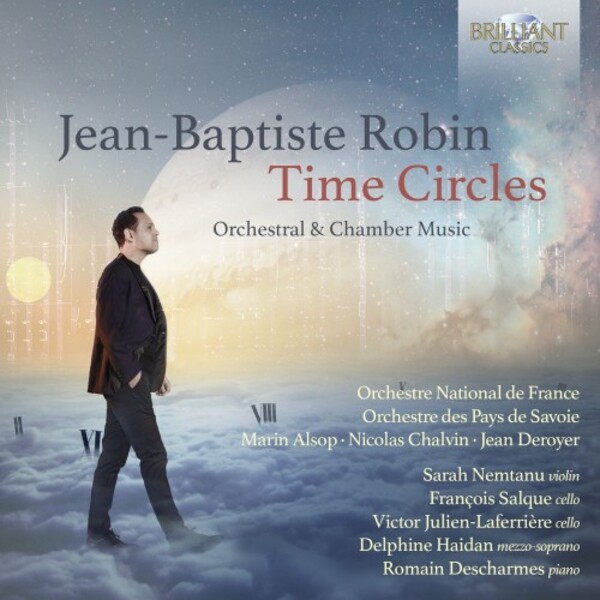
JB Robin - Time Circles: Orchestral & Chamber Music
£9.45
In stock - available for despatch within 1 working day
Despatch Information
This despatch estimate is based on information from both our own stock and the UK supplier's stock.
If ordering multiple items, we will aim to send everything together so the longest despatch estimate will apply to the complete order.
If you would rather receive certain items more quickly, please place them on a separate order.
If any unexpected delays occur, we will keep you informed of progress via email and not allow other items on the order to be held up.
If you would prefer to receive everything together regardless of any delay, please let us know via email.
Pre-orders will be despatched as close as possible to the release date.
Label: Brilliant Classics
Cat No: 96569
Format: CD
Number of Discs: 1
Release Date: 2nd December 2022
Contents
Artists
Sarah Nemtanu (violin)Francois Salque (cello)
Victor Julien-Laferriere (cello)
Delphine Haidan (mezzo-soprano)
Romain Descharmes (piano)
Orchestre National de France
Orchestre des Pays de Savoie
Conductors
Marin AlsopNicolas Chalvin
Jean Deroyer
Works
Crop CirclesLa Lame des heures
Nuits (3)
Poemes de l'aube et de la nuit
Tic-Tac
Zenith
Artists
Sarah Nemtanu (violin)Francois Salque (cello)
Victor Julien-Laferriere (cello)
Delphine Haidan (mezzo-soprano)
Romain Descharmes (piano)
Orchestre National de France
Orchestre des Pays de Savoie
Conductors
Marin AlsopNicolas Chalvin
Jean Deroyer
About
The title of the first piece, Crop Circles (2012), refers to the man-made, symmetrical, geometric shapes found in crop fields. The slow introduction reveals two motifs: the first based on a symmetrical mode with a swirling melody, symbolising the geometrical designs of the Crop Circles in question; the second introduces the human element into this semi-natural, semi-artificial world. In the Allegro, ‘the initial swirling becomes a whirlwind’ (J.B. Robin), then in the slow central section the second theme appears on the solo violin, evoking man at the centre of nature (the eye of the storm or the centre of the circle…). Tic-tac (2019) was a commission from the Versailles Grand-Parc communauté de communes. This sonatina in five movements varies the tempi, rhythms and melodies, but is based throughout on the unrelenting movement of a pendulum. The opening tick-tock introduces the dominant motif, beginning the process of metamorphosis which develops throughout the movements.
Following the example of Crop Circles, Zénith (2020) brings together man and passing time through two juxtaposing or overlaying themes. A first section introduces the pizzicato tick-tock of time, then later the human theme appears alone and rises to an intense lyricism. A brief coda on the tick-tock: the struggle between man and time inevitably ends in the latter’s victory.
The theme of passing time is placed in a nocturnal setting in the three Poèmes de l'aube et de la nuit (Poems of the Dawn and the Night), wherein the unfolding of the night is ever perceived more slowly than the day. As such, there are no fast movements in these three poems, but instead alternating recitative sections and lyrical passages. The A-B-A' structure of the two first poems gives way to a through-composed structure in the third, which ends the piece with a piano postlude. Commissioned in 2014, Trois Nuits includes three movements and pays tribute to French composer Dutilleux. From the choreographic first movement to the recurring lament-like theme, the final increase of tempo leads the work to its infernal conclusion.
Much of La Lame des heures (2019) is punctuated by the symbolic tick-tock: ‘Dark, mischievous, ill-tempered, heroic, the tick-tock takes on different characters and gradually appears as a blade that wounds, leaves scars, that never ceases’ (J.B. Robin). The near-constant dramatic tension of the piece is reminiscent of Crop Circles, and the final section culminates in the beating of twenty-four dissonant chords, symbolising the implacable cycle of the hours.
Error on this page? Let us know here
Need more information on this product? Click here